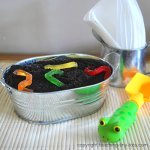The Research Behind Phonemic Awareness and Reading
by Jim Yang
(Vancouver, BC. Canada)
When it comes to teaching children to read, there are mainly 2 schools of thought that the merits of each are constantly debated against one another. One is the whole language method of look and say, and the other is the phonics method of learning to read. My article here is not to discuss these two methods of teaching; however, I can say definitively that studies have shown, repeatedly, that the combination of phonics and phonemic awareness is far superior than the whole language method of learning.
Phonemic awareness is a critical component of phonics and when you combine these two together, you will achieve amazing results. In fact, phonemic awareness and phonics can be taught to children as young as 2 years old, and these children can learn to read phonetically at very young ages. See here for some videos of very young children reading. I have used these methods to teach all of my children to read phonetically at age 2.
So what is phonemic awareness?
Phonemic awareness (PA) is the ability to hear, work with, and manipulate the smallest units of sound, which are known as phonemes. My goal here is to share with you some of the amazing scientific research that has been conducted on this subject, and how it relates to reading acquisition. Researchers have found that children that exhibited a high level of PA in grade one performed exceptionally well in vowel substitution tasks compared to children with little to no PA skills. These same researchers found that it was phonemic awareness that directly predicted the accuracy of reading and spelling abilities by the end of grade one.
1 Many other studies had similar findings. For example, one study involving 42 children (around 5.5 years old) found that the development of PA helped to greatly improve spelling and reading skills.
2 In fact, the research on phonemic awareness had demonstrated such potential, that in 2,000, the National Reading Panel (NRP) conducted a study and analysis of PA. This was an enormous undertaking where the NRP reviewed 1,962 studies for their meta-analysis, and the findings of their report was impressive to say the least.
Here's a brief summary of the NRP findings:
• PA improves children's reading skills and reading comprehension
• It helps children learn to spell
• PA was found to be the best school-entry predictors of how well children will learn to read
• The benefits and effects of PA lasts well beyond the initial period of teaching
Finally, the NRP went so far to state that:
"Teaching phonemic awareness to children significantly improves their reading more than instruction that lacks any attention to PA."
3 So, there you have it - the scientific support of the many amazing benefits of teaching phonemic awareness.
There is no doubt in my mind that the combination of teaching phonics along with PA allows parents and educators to achieve amazing reading skills development for their children and students. I know this as a fact as I have taught all of my children to read by age 2, and have helped thousands of parents teach their children to read at very young ages.
If you would like to find more great information on how to teach your child to read, please visit us at: http://www.readingbyphonics.com On our site, you will find learning guides, videos, learning activities, and free printable phonics worksheets to assist you in teaching your child to read.
Footnotes:
1. Cognition. 1991 Sep;40(3):219-49.
The relationship of phonemic awareness to reading acquisition: more consequence than precondition but still important.
Wimmer H, Landerl K, Linortner R, Hummer P.
University of Salzburg, Austria.
2. Exp Child Psychol. 2002 Jun;82(2):93-115.
Emergent literacy skills and training time uniquely predict variability in responses to phonemic awareness training in disadvantaged kindergartners.
Hecht SA, Close L.
3. National Institute of Child Health and Human Development. (2000). Report of the National Reading Panel. Teaching children to read: An evidence-based assessment of the scientific research literature on reading and its implications for reading instruction (NIH Publication No. 00-4769). Washington, DC: U.S. Government Printing Office.






